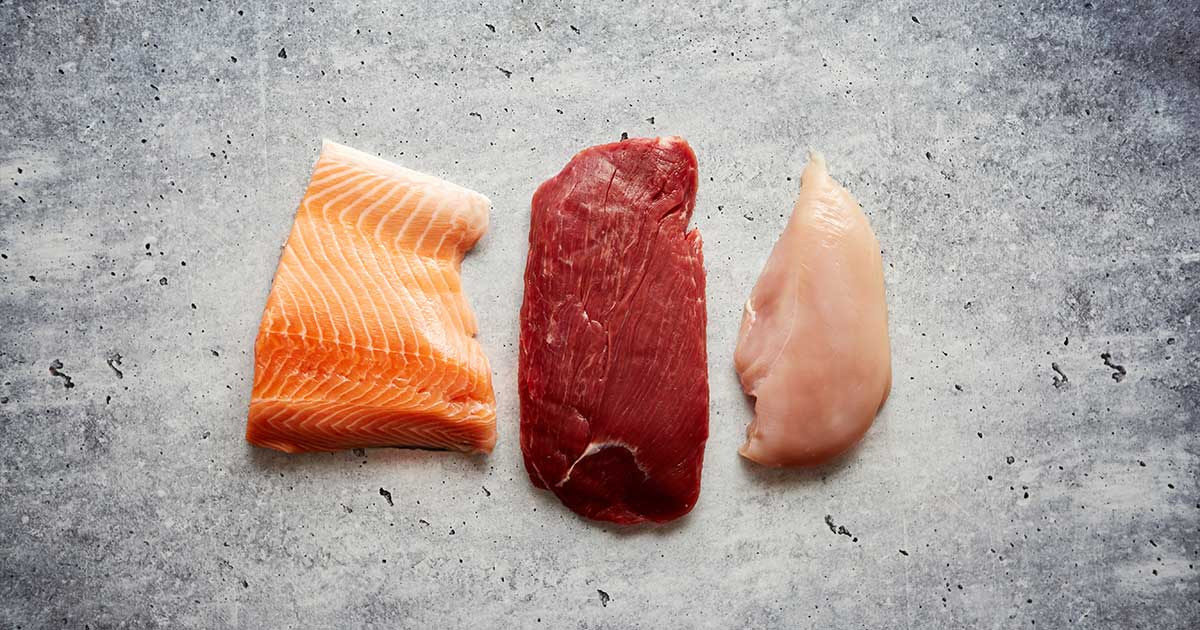Welcome to another installment of “Debarking Pet Myths,” our monthly series that addresses common myths, misconceptions and old wives’ tales about dogs, cats and their nutrition.
Conflicting information and horror stories about what’s used to make dog and cat foods abound online and off. Consequently, many pet owners have come to believe “real” or “whole meat” ingredients (e.g., beef, lamb or pork) are better and healthier protein sources than protein meals (e.g., beef meal, lamb meal, meat meal, or meat and bone meal). But is that really true?
Not necessarily — although it is an attractive marketing claim.
Real meat is an appetizing claim that appeals to pet owners. The phrase “real meat” conjures up images of steaks, chops and roasts — cuts of meat you might find at your local grocery store or butcher shop. But that’s only part of what’s considered real meat for pet food.
The Association of American Feed Control Officials (AAFCO) defines “meat” for pet food as striated muscle of the skeleton, tongue, diaphragm, heart and esophagus of mammals with or without the accompanying fat, skin, connective tissues (sinew), nerves and blood vessels. No bone is included. Meat intended for use in dog and cat foods is often mechanically separated from bones, a process that produces a finely ground, paste-like product that you’re unlikely to find in any retail store meat case.
Pet food companies may choose to identify the type of animal from which the meat came. They can also use the generic term “meat” if it comes from cattle, pigs, sheep or goats. Meat from other mammals must be identified by species (e.g., bison, venison or rabbit).
Muscle from non-mammalian species — chickens, turkeys, ducks or different species of fish — can’t be called “meat” on a pet food label. Instead, these protein sources must be identified specifically as poultry or fish or by their specific species (e.g., chicken, duck, salmon or tuna).
AAFCO defines “meat meal” for pet food as the rendered product from mammalian tissues without added blood, hair, hoof, horn, hide trimmings, manure, or stomach or rumen contents, although an exception is allowed for the presence of amounts that occur unavoidably during processing. The tissues that go into meat meals may be meat that has been deemed unfit for people to eat or may be animal parts that many Americans won’t eat. Organ meats, such as the stomach, intestines (with contents removed), spleen, liver and kidneys, can end up in rendered protein meals. These meat meals are more easily digestible and nutrient rich.
During rendering, the meat “leftovers” are ground, mixed and cooked to separate protein from fat and to kill any microorganisms present. The separated fat is further processed and purified for other uses, including as an ingredient in pet foods. The protein mixture is dried and ground to a uniform particle size to create a dry concentrated powder of protein and minerals that’s easily stored, transported and used in dry pet foods.
The greatest difference between meat and meat meal is water. Skeletal muscle is about 75 percent water, and this water is cooked off during the process of making dry pet food. In contrast, meat meals typically contain about 10 percent moisture. So while meat meal may not whet your appetite, remember that dogs and cats don’t share people’s aesthetic concerns for food. The fact is, both real (or whole) meat and meat meals provide valuable nutrients that are digestible and palatable when used to make dog and cat foods.
As with other pet food ingredients, protein ingredients vary in quality regardless of their form (e.g., whole or meal). Whether one is better or healthier depends on a number of factors, including the initial quality of the raw ingredients; proportions of muscle, bone, connective and fat tissues; raw material handling and transportation; variations in processing conditions; and supplier integrity.
Pet food companies establish strong relationships with select suppliers to help manage ingredient quality — and, ultimately, the quality of the finished pet food. Manufacturers write very specific purchasing requirements based on nutritional specifications for purchased ingredients, and they test ingredients to confirm specifications are met before delivery is completed. AAFCO ingredient definitions, which are strict legal definitions of what can or cannot be in pet food ingredients, are just the starting point for these specifications.








